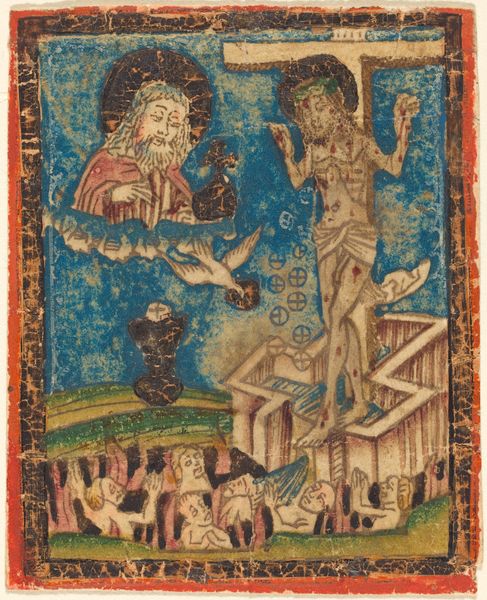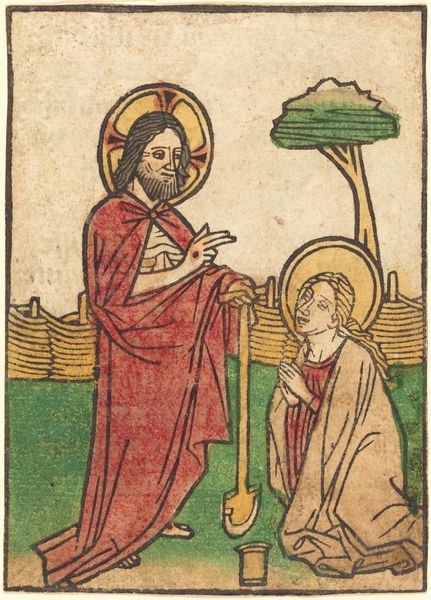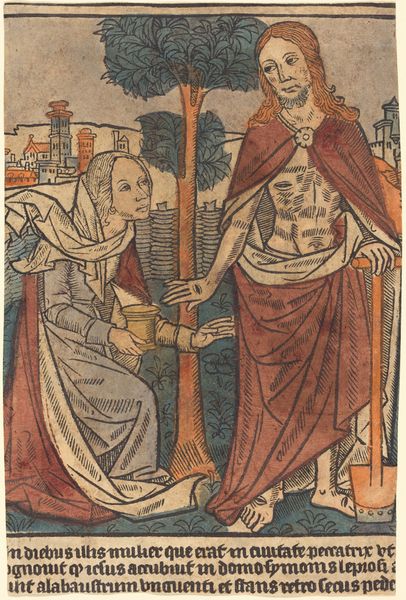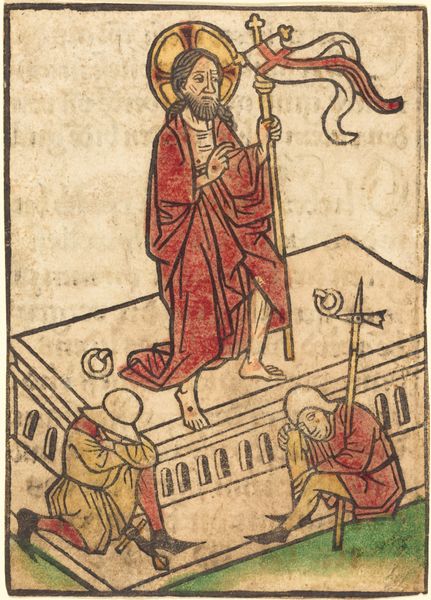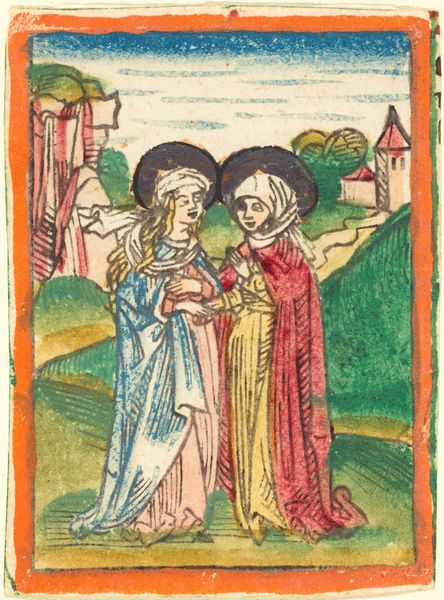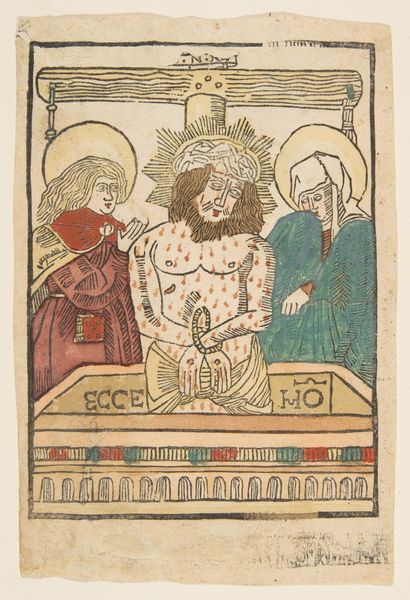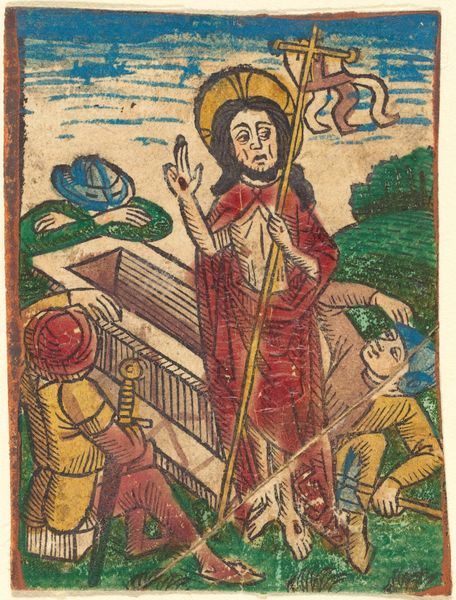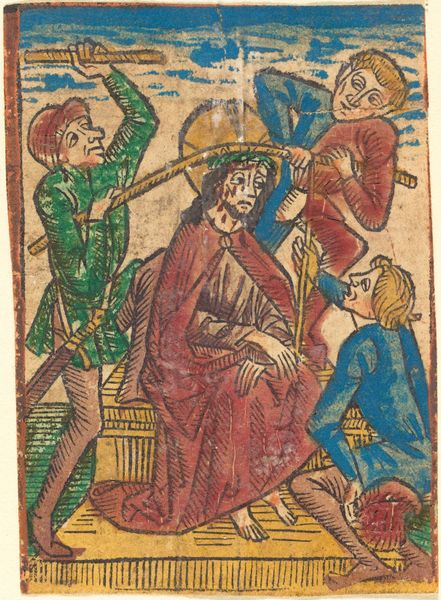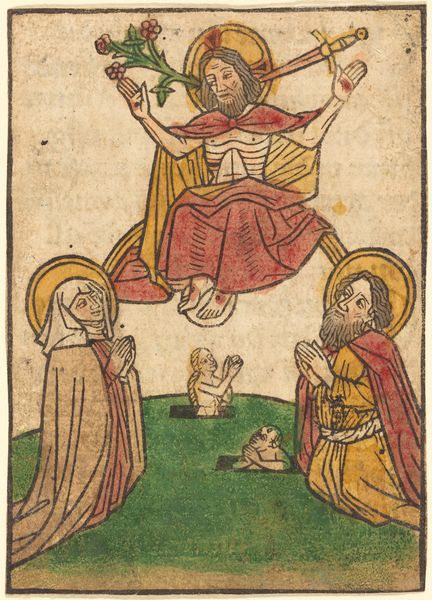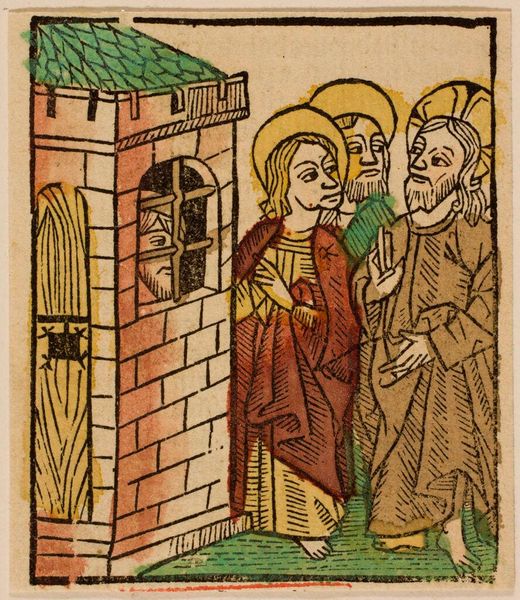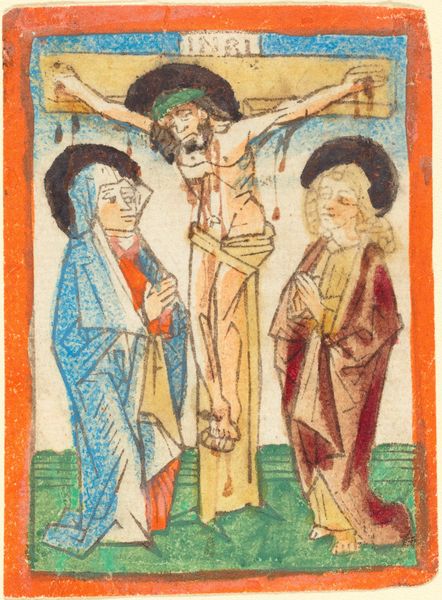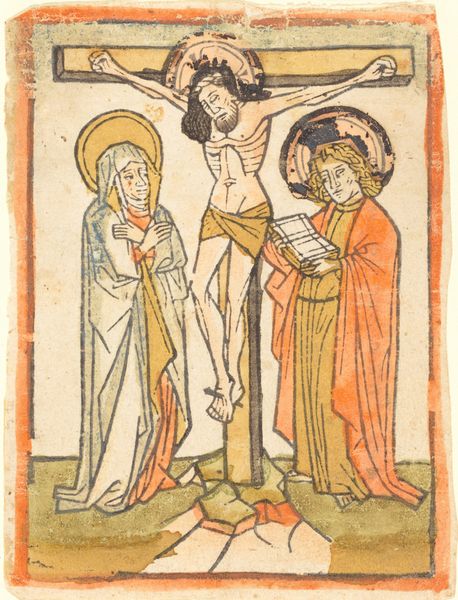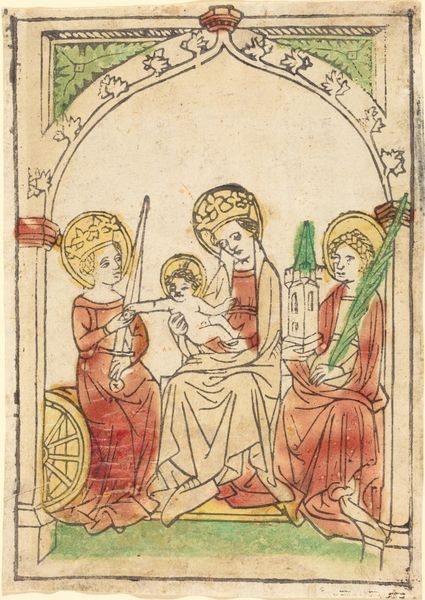
print, ink
#
medieval
# print
#
figuration
#
ink
#
coloured pencil
#
history-painting
Dimensions: Overall: 11.2 x 8 cm (4 7/16 x 3 1/8 in.) overall (external frame dimensions): 59.7 x 44.5 cm (23 1/2 x 17 1/2 in.)
Copyright: National Gallery of Art: CC0 1.0
Ludwig of Ulm rendered "Christ in Limbo" with ink and watercolor on paper around the turn of the 16th century. At first glance, the eye is drawn to the stark contrast between the fiery reds and oranges of Hell on the upper left, and the hopeful expressions of those in Limbo. The composition divides the scene into two distinct zones: the architectural structure of Limbo, and Christ's forceful entry. This division emphasizes the transition and disruption of established order through Christ's presence. Notice how the linear perspective is flattened, typical of the period, drawing attention to the symbolic rather than the spatial relationships. The use of line is particularly striking. Bold outlines define each figure, object, and plane, giving the image a graphic quality. This flattening effect destabilizes our perception, inviting us to consider the artwork's underlying conceptual framework. This isn't just a visual representation; it's an assertion of theological space, challenging fixed notions of salvation.
Comments
No comments
Be the first to comment and join the conversation on the ultimate creative platform.
